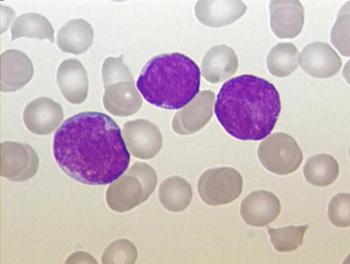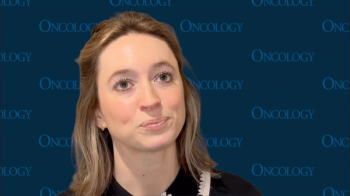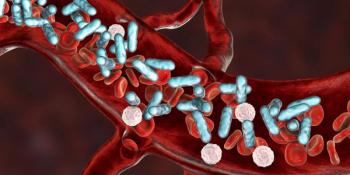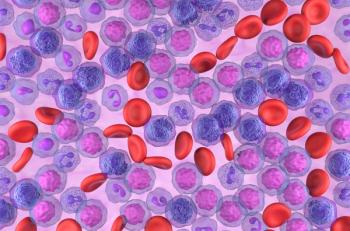
Dasatinib Moves Ahead of Imatinib as Front-line Therapy for Newly Diagnosed CML in Chronic Phase
The likelihood of patients achieving complete cytogenetic response at any time was 1.5 times higher with dasatinib (Sprycel) than with imatinib (Gleevec), according to an investigator with the DASISION trial.
ORLANDO, FLA-Dasatinib (Sprycel) should become the initial treatment option in newly diagnosed chronic myeloid leukemia in chronic phase (CML-CP). Follow-up data from the DASISION* trial continued to show dasatinib’s superior efficacy to imatinib (Gleevec).
Neil Shah, MD, PhD, presented 18-month follow-up data from the DASISION trial that showed dasatinib, which is currently well-established as second-line treatment for patients with CML-CP, produced higher and faster rates of complete cytogenetic response (CCyR) and major molecular response (MMR) compared with imatinib.
Dr. Shah is an assistant professor at the University of California, San Francisco, and coleader of the Hematopoietic Malignancies Program at the UCSF Helen Diller Family Comprehensive Cancer Center.
Earlier results from the phase III DASISION study-conducted in 180 countries with 519 patients-were published in the New England Journal of Medicine earlier this year. In that study, newly diagnosed patients were randomized to receive dasatinib (100 mg once daily) or imatinib (400 mg once daily) as front-line therapy. The primary analysis, after a median follow-up of 14 months, demonstrated superior efficacy of dasatinib over imatinib and an acceptable safety profile. As a result, dasatinib 100 mg daily has been recently approved by the FDA for the front-line treatment of CML-CP (
Dr. Shah presented data from 81% of patients in the dasatinib arm and 80% of patients in the imatinib arm who remained in the trial. All analyses were based on intention-to-treat patients. Efficacy and safety results in the extended analysis were consistent with those reported after 12 months of follow-up, Dr. Shah said.
The confirmed CCyR at 12 months was 77% with dasatinib vs 67% with imatinib. With the longer follow-up, it was 78% with dasatinib vs 70% with imatinib (P = .0366). The likelihood of achieving CCyR at any time was 1.5 times higher with dasatinib than with imatinib, Dr. Shah said. The median time to CCyR was 3.1 months for dasatinib and 5.8 months for imatinib (
Rates of MMR at 12 months were 46% for dasatinib and 28% for imatinib. With further follow-up, there was still a statistically significant benefit in this regard for dasatinib at any time: 57% vs 41% for imatinib (P = .0002), Dr. Shah reported. Based on time-to-response analysis, the likelihood of achieving MMR was 1.8-fold higher with dasatinib than with imatinib (P < .0001). Among patients who achieved MMR, the median time to achievement was 8.3 months with dasatinib and 11.8 months with imatinib. There was a greater likelihood of achieving MMR, regardless of Euro/Hasford risk group status, in dasatinib-treated patients than in those treated with imatinib.
Fifteen patients had transformed to accelerated or blast phase CML (six in the dasatinib arm and nine in the imatinib arm). One case in each group has been accelerated, and the remainder have been blast phase. Five patients who achieved a CCyR transformed to accelerated or blast phase (two in the dasatinib arm and three in the imatinib arm). No patient who achieved an MMR had transformed to accelerated or blast phase at the time of the ASH presentation, Dr. Shah noted.
At 18 months, the rates of progression-free survival were 94.9% for patients in the dasatinib arm and 93.7% for those in the imatinib arm. Eleven deaths occurred among the dasatinib-treated patients and six in the imatinib arm. The overall survival rates were 96% for dasatinib and 97.9% for imatinib.
Discontinuation of treatment due to drug-related adverse events was infrequent in both groups and there were very low grade 3 and 4 toxicities in either arm, Dr. Shah said.
“Dasatinib 100 mg once daily continues to demonstrate superior efficacy compared with imatinib, with higher and faster rates of complete cytogenetic response and major molecular response,” Dr. Shah said. “The longer follow-up continues to support the use of dasatinib as first-line therapy in newly diagnosed chronic phase patients. Based on the predictive value of early complete cytogenetic response, we anticipate that further follow-up may demonstrate better long-term outcomes for patients receiving dasatinib rather than imatinib.”
*DASISION = The Dasatinib versus Imatinib Study in Treatment-Naive CML Patients
Related Reading
Newsletter
Stay up to date on recent advances in the multidisciplinary approach to cancer.

















































































